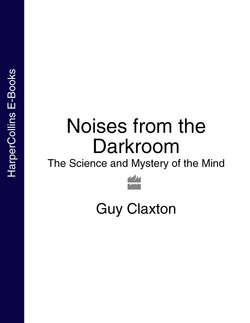Читать книгу Noises from the Darkroom: The Science and Mystery of the Mind - Guy Claxton - Страница 20
Bodies as Systems
ОглавлениеOne of the most remarkable and pervasive characteristics of the genetically designed body, throughout the animal kingdom, is the extent to which it retains its form despite the continual interactions with a changing world. This property has recently been highlighted by Chilean scientists Humberto Maturana and Francisco Varela, who refer to it as ‘autopoiesis’, or ‘self-organisation’, though it was remarked upon as long ago as 1937 by Sir Charles Sherrington in his Gifford Lectures Man on His Nature.13
Life is an example of the way an energy-system, in its give-and-take with the energy-system around it, can continue to maintain itself for a period as a self-centred, so to say, self-balancing unity. Perhaps the most striking feature of it is that it acts as though it ‘desired’ to maintain itself. But we do not say of the spinning of a heavy top which resists being upset that it ‘desires’ to go on spinning. The very constitution of the living-system may compel it to…14
And it follows that:
Life as an energy-system is so woven into the fabric of the Earth’s surface that to suppose a life isolated from the rest of that terrestrial world even briefly gives an image too distorted to resemble life. All is dove-tailed together.15
Animals do not exist by ‘being’; they exist by happening. An animal is not like a coffee mug, which was once made and now can be full or empty, warm or cold, sitting on the table or hanging from its hook, but basically the same ‘thing’, constituted of the same stuff, and continuing to be so until it breaks. An animal is like a whirlpool; it derives its relative stability, and even its form, from its motion, and it is only kept moving through its interactions with the wider system of which it is part. Try to take the vortex home in a bucket and you will be disappointed. Disconnect an animal from its ‘life support systems’ and it too begins to lose its form and fall apart into constituents that are simpler, more independent of one another, more dead.
There is nothing very mysterious about this view. It only needs stressing in the context of a lopsided scientific tradition which has taught us that the only way to know something properly is to take it to pieces, and study those exhaustively. This analytic, reductionistic approach works well in some areas of enquiry, most notably in the inorganic worlds of physics, chemistry and geology. But if you pull an animal to bits, whether literally or conceptually, it dies. It loses the integrity, the interwovenness that is its central defining characteristic. And it loses the form that only emerges as a result of this interwovenness.
